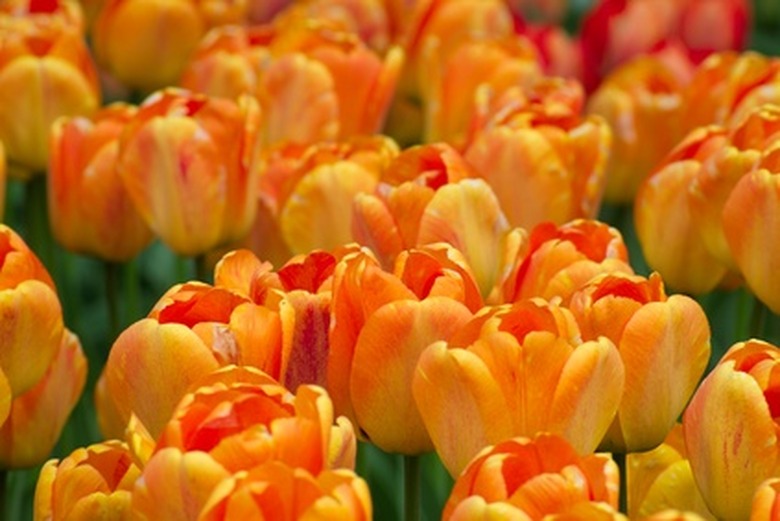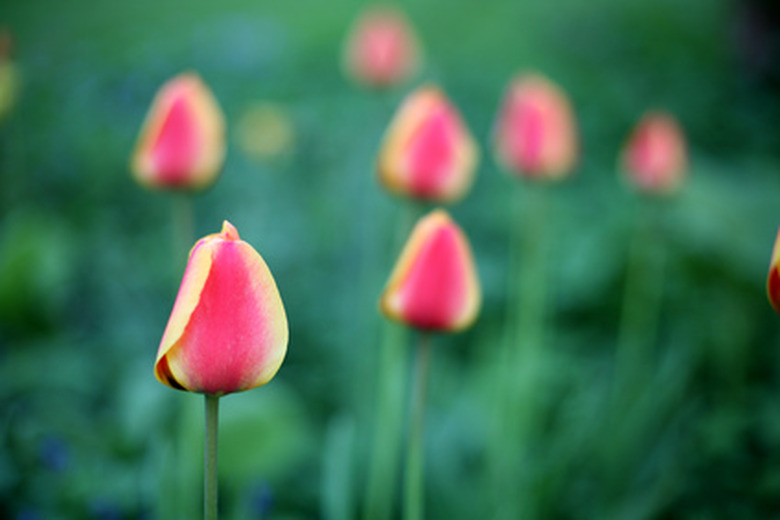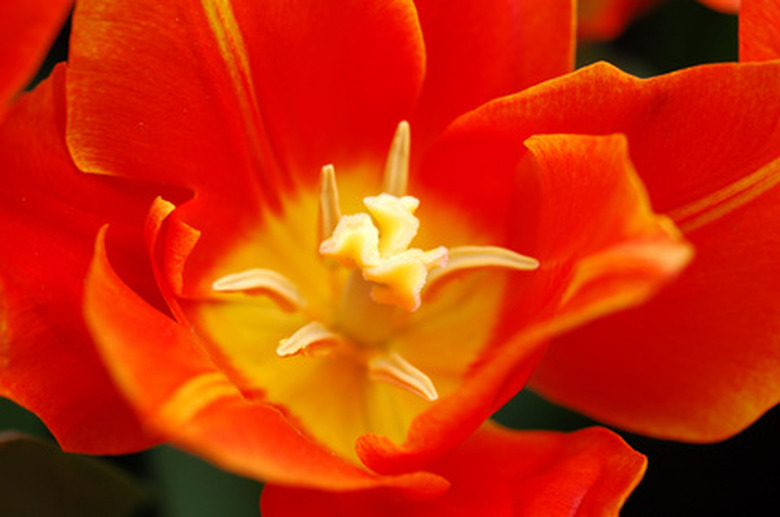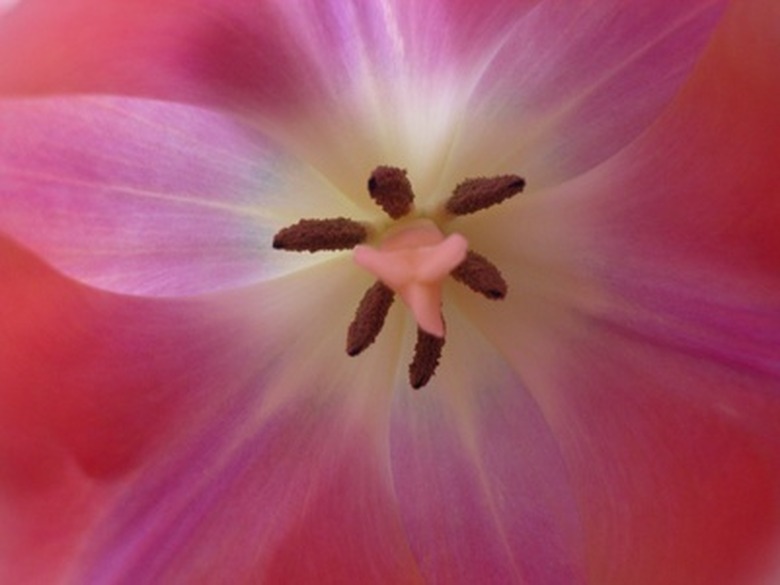Flower Parts Of A Tulip
The parts of a tulip flower play a role in the reproduction of the plant. Tulips have perfect flowers, not from their beauty, but because they contain both male and female parts in their structure, making them hermaphroditic, according to Colorado State University Extension. This means that tulips do not need other flowers to pollinate.
Tepals
The tepals combine the petals and protective sepals into one organ. Unlike other flowers, with separate green sepals, the tepals of tulips envelop the flower, replacing the petals; but like the petals, the tepals have bright colors and scents for attracting pollinators. Since tulips contain tepals in multiples of three, they can be identified as monocots.
Pistil
The female portion of the tulip, the pistil, has a rounded bottom and a tapered top, known as the stigma. This stigma accepts pollen deposited onto the tip where it travels down the style to the ovary of the tulip to pollinate the unfertilized seeds inside, known as the ovules.
- The parts of a tulip flower play a role in the reproduction of the plant.
- Unlike other flowers, with separate green sepals, the tepals of tulips envelop the flower, replacing the petals; but like the petals, the tepals have bright colors and scents for attracting pollinators.
Stamen
The male portion of the tulip, known as the stamen, contains two parts which produce pollen and hold it aloft for pollination. The pollen begins life in the anthers, which are held up by the filaments. When a pollinator brushes up against the anther it picks up the tulip pollen which has the potential to be moved to the stigma so it can pollinate the flower.
Tulip Tree Flower?
The tulip tree is hardy to U.S. Department of Agriculture plant hardiness zones 4 or 5 through 9. Its spread is considerably smaller, only 30 to 50 feet, giving it an upright oval growth pattern with spreading pyramidal branches. The tulip tree's flowers appear in late spring or early summer, usually sometime between May and June. The blooms last for a month or more. It prefers moist, well-drained loams, but will also grow in clay soils. It can grow in both alkaline and acidic pH levels, and though it prefers full sun, it will also grow in partial shade. In mild areas it tolerates seaside growth, and will often live for more than 150 years. Watch out for aphids, which can infest the tree in large quantities and cause honeydew drip, which encourages sooty mold. The tulip tree is often used as a landscape tree, planted alone where it can enjoy full sun and provide good visual interest.
- The male portion of the tulip, known as the stamen, contains two parts which produce pollen and hold it aloft for pollination.
- It can grow in both alkaline and acidic pH levels, and though it prefers full sun, it will also grow in partial shade.



